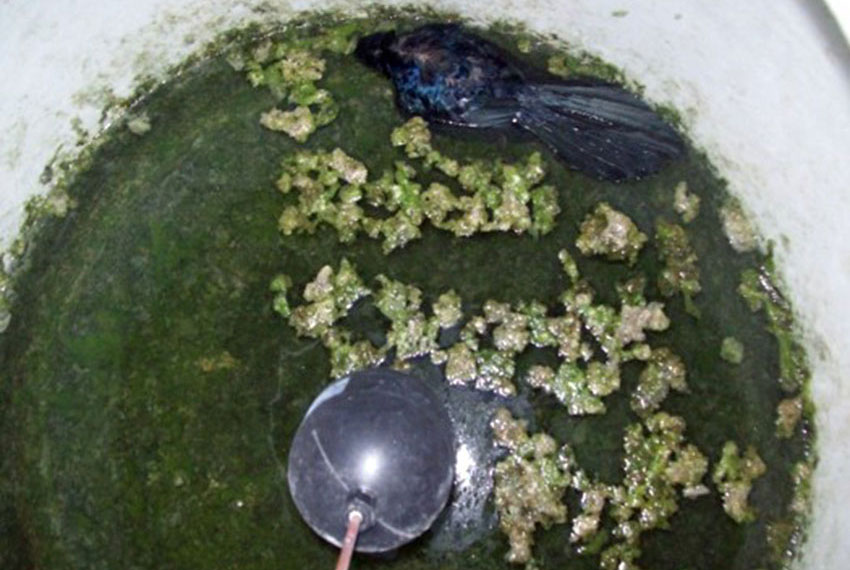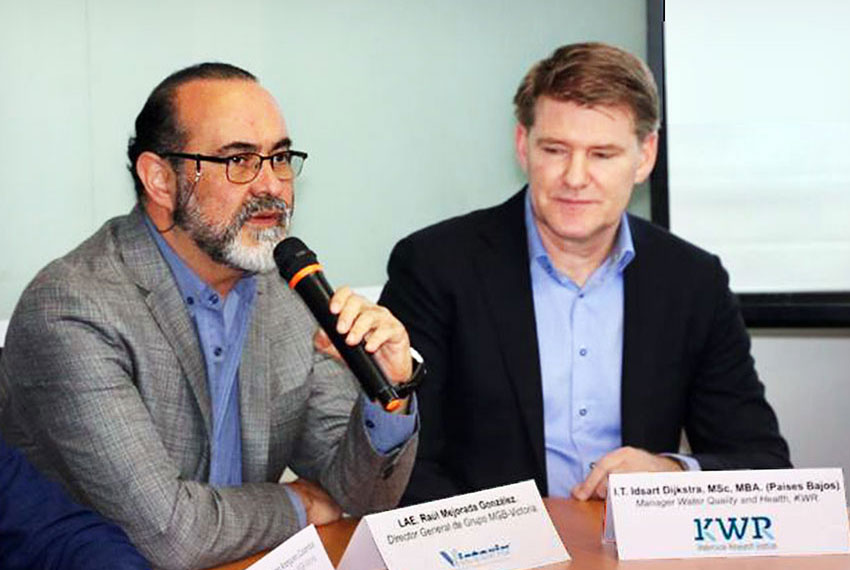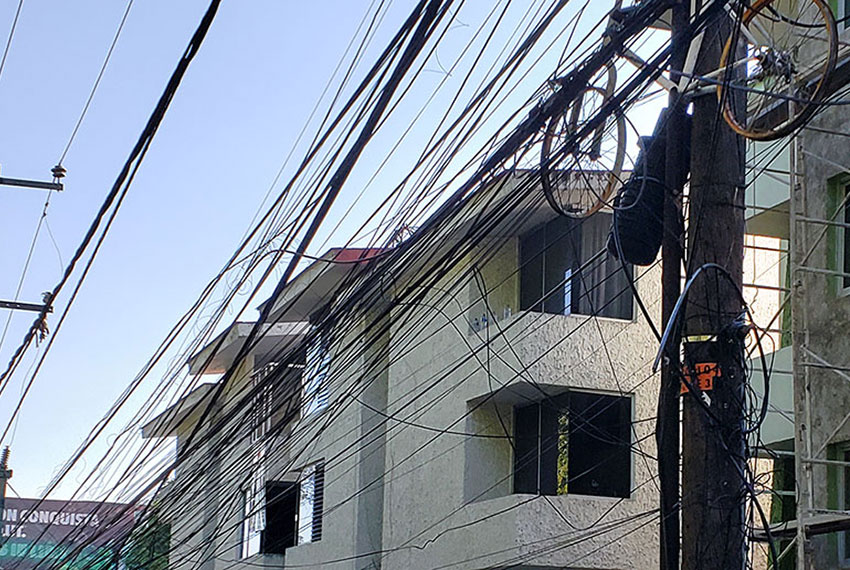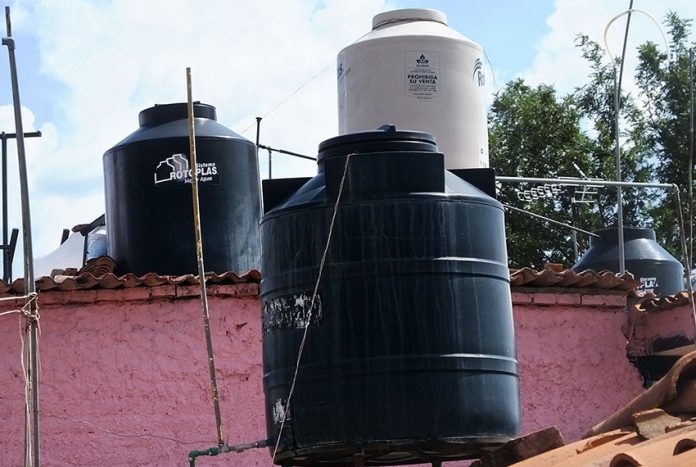If you fly above most cities in Mexico, you’ll see a big water tank on the roof of virtually every house. These reservoirs supply undrinkable water to families and are known as tinacos.
To Guadalajara businessman Raúl Mejorada, tinacos are emblematic of serious problems in Mexico’s water distribution systems and for years he has fought to do something about them.
In May came the first breakthrough in Mejorada’s war on tinacos. Representatives of Jalisco and the town of Ciudad Guzmán, located 100 kilometers south of Guadalajara, signed a collaboration agreement with Mexican and Dutch companies to replace the local water distribution system with one that will bring potable water to every tap.
The project will totally revamp its utility networks, using cutting-edge technology to bring each household not only water, but utilities like electricity, telephone, internet, cable TV and gas.
Mejorada hopes the transformation of Ciudad Guzmán will be a showcase for what can be done in every municipality in the country.

At present, the citizens of most of those municipalities must heed the same advice given to tourists visiting the country: “Don’t drink the water!”
At first glance, one might imagine that this water problem results from contamination at the source, but it does not. Mexican law requires all towns to supply drinkable water. And they do.
The problem develops when the perfectly potable water leaves the purification plant. It runs through water lines which inevitably have cracks. These pipes frequently lie next to sewage pipes, which also have cracks.
While water pressure is constant in many countries, it may often drop to zero in Mexico. Whenever the pressure in the sewer pipes is stronger than the pressure in the water pipes, contamination can result.
The fact that the water may, at times, be reduced or off has forced consumers to install tinacos or other types of reservoirs to assure a constant supply of water. Unfortunately, each reservoir is a sort of giant petri dish in which bacteria such as E. coli can happily multiply.
To the rescue come companies that purify this same tap water — removing all the healthy minerals along with the bacteria, of course — and sell it in big bottles or demijohns called garrafones, which they deliver to the door of every single family and business. In spite of the monetary and environmental costs of this delivery system, Mexico is, per capita, the biggest consumer of bottled water in the world.

According to the Inter-American Development Bank, the average Mexican drank 480 liters of bottled water in 2011, more than four times the amount drunk by a thirsty citizen of the U.S.
Mejorada has been decrying this sad situation for years, but the story gets worse.
Says Mejorada: “Among the leaky municipal water pipes, the individual pumps to bring it up to every rooftop, the tinaco itself and the jury-rigged patchwork of pipes distributing it throughout the house, a full 50% of the water distributed by Mexican towns and cities simply disappears. Every day half our water is wasted; is literally thrown away!”
No wonder World Resources Institute categorizes Mexico as suffering from High Baseline Water Stress, meaning that the nation consumes between 40% and 80% of the water supply available for a year.
“For more than 25 years,” says Mejorada, “we’ve been studying the water-supply problem in Mexico and comparing it to the systems of more developed countries where potable water is delivered under pressure 24 hours a day, 365 days a year.
“The Netherlands shines in its efficient, innovative approach to finding sustainable sources of water, storing and distributing it using modules which can increase as the city grows. Each of these systems can supply many consumers — 50,000-80,000 — assuring a constant supply of water under pressure.

The Dutch system is simple, economical and efficient, but what is curious is that it is also economically viable and self-financing.
The system employs high-velocity flexible hoses with tube diameters as small as 40 millimeters for what is called a “self-cleaning network.” These tubes, together with hoses for gas and wiring for electricity, telephone, cable TV and internet, are all laid together using trenchless technology, a new way of tunneling without disruption on the surface.
This makes it possible to install utilities under rivers, canals and other obstacles with little or no damage to the environment. It is said that the resulting system is as earthquake-proof as you can get.
According to Mejorada, “Our program begins very simply. We select the best already-existing infrastructure and we concentrate it in locations where it’s easiest to obtain and distribute water. This immediately results in savings that allow us to implement these central systems in less viable and more complicated places.
“After this comes replacement of present-day water pipes and, in the long run, the eventual elimination of tinacos, reservoirs and individual pumps. This was achieved by Spain in the 1950s.”
A collaboration agreement was signed by the municipality, its water utility (SAPAZA) and Mejorada’s firm MGB Victoria, headquartered in Guadalajara. Dutch firms also participating are Eijkelkamp Soil & Water, Dareius and the KWR Foundation, a unique fusion of Dutch companies and a water research institute.
In addition, the government of the Netherlands will also invest in the project through technology transfer, technical support and infrastructure.
Mejorada estimates the cost of investment in the Ciudad Guzmán project at about 300 million pesos with a return in less than eight years. He expects the project to be completed in about three years.
“Our aim,” says SAPAZA director Alfonso Delgado Briseño, “is soon to provide clean, safe drinking water at the tap 24 hours a day.”
But more than that, the Mexican and Dutch partners hope to turn Ciudad Guzmán into a compelling example for all of Mexico focusing on the sustainable use of water and energy.
[soliloquy id="87551"]
The writer has lived near Guadalajara, Jalisco, for more than 30 years and is the author of A Guide to West Mexico’s Guachimontones and Surrounding Area and co-author of Outdoors in Western Mexico. More of his writing can be found on his website.
